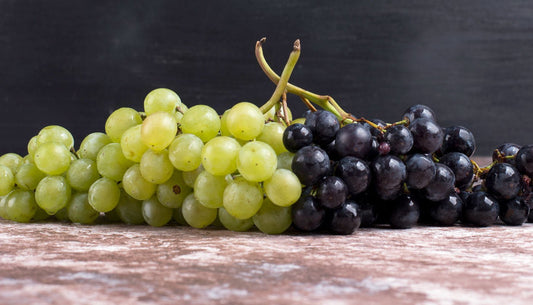How to Choose the Perfect Wine
Choosing the right wine can feel like a daunting task, especially with so many options available. However, with a few tips and a little knowledge, selecting the perfect bottle can become an enjoyable experience. Here’s a guide to help you choose wine with confidence, whether you’re picking something for a special dinner, a gift, or simply a quiet evening at home.
1. Know Your Preferences
The first step to choosing the right wine is to understand what you enjoy. Are you a fan of bold, full-bodied reds, or do you prefer light, refreshing whites? Think about previous wines you’ve enjoyed and identify what you liked about them—whether it’s the fruitiness, the acidity, the richness, or the lightness. This will give you a base for what to look for in other wines.
2. Consider the Occasion
The occasion plays a significant role in choosing a wine. A robust red like a Cabernet Sauvignon or Syrah is ideal for a hearty dinner or a special celebration, while a light, crisp white like Sauvignon Blanc or Vinho Verde is perfect for warm-weather sipping or pairing with seafood. For gatherings or celebrations, consider something versatile, like a sparkling wine or rosé, which can appeal to a variety of tastes.
3. Match the Wine to the Food
Pairing wine with food enhances both the drink and the meal. Here are some basic guidelines:
- Red Meat: Opt for a bold red wine like Cabernet Sauvignon, Merlot, or a Portuguese Douro.
- Poultry: Pair with a medium-bodied red, like Pinot Noir, or a rich white, such as Chardonnay.
- Seafood: Crisp whites like Sauvignon Blanc or Albariño are ideal, while sparkling wines also work well with shellfish.
- Salads and Light Dishes: Light whites like Pinot Grigio or Sauvignon Blanc bring out the freshness of salads.
- Desserts: Sweet wines like Port, Sauternes, or Moscato complement dessert without overwhelming it.
These pairings aren’t set in stone, so feel free to experiment with different combinations.
4. Explore Wine Styles
Understanding different wine styles can help you make informed choices. Here’s a quick overview of some popular styles:
- Light & Fruity Reds: These wines, like Gamay or some Pinot Noirs, are easy-drinking and pair well with a variety of foods.
- Full-Bodied Reds: Rich and intense wines, like Cabernet Sauvignon and Douro, are perfect for red meat and hearty dishes.
- Aromatic Whites: Wines like Riesling or Gewürztraminer are highly aromatic, with floral or fruity notes, ideal for pairing with spicy foods.
- Light & Fresh Whites: Crisp and refreshing, like Sauvignon Blanc or Vinho Verde, perfect for warm days or seafood.
- Rosé: A versatile choice, often light and refreshing, that pairs well with salads, seafood, and light meals.
- Sparkling Wine: Great for celebrations, sparkling wines like Champagne and Cava bring a festive touch to any occasion.
- Fortified Wine: Rich and sweet, like Port or Sherry, ideal for desserts or sipping slowly after a meal.
5. Look at the Label
Wine labels can tell you a lot about what’s inside the bottle. Pay attention to the grape variety, the region, and sometimes even the winemaking process. For instance:
- Grape Variety: Knowing whether the wine is made from Cabernet Sauvignon, Merlot, Chardonnay, or another grape gives insight into its expected flavour and body.
- Region: Wine regions have distinctive climates and soils, which affect the taste. A Chardonnay from France’s Burgundy region will taste different from a Chardonnay from California.
- ABV (Alcohol by Volume): Higher ABV wines (14% or more) tend to be fuller and more intense, while lower ABV wines are lighter and more refreshing.
6. Don’t Be Afraid to Try New Things
One of the best ways to learn about wine is to step out of your comfort zone. Try different grape varieties, explore wines from various regions, or experiment with new styles. Portugal, for example, has over 250 indigenous grape varieties, many of which offer unique flavours not found anywhere else.
7. Ask for Recommendations
Whether you’re at a wine shop, restaurant, or browsing online, don’t hesitate to ask for recommendations. Wine professionals are usually passionate about sharing their knowledge and can help you find something tailored to your preferences and occasion.
8. Consider Your Budget
Good wine doesn’t have to be expensive. Portugal, for instance, is known for high-quality wines at very reasonable prices. Look for recommendations within your budget, and remember that price isn’t always an indicator of quality—many affordable wines offer exceptional flavour and complexity.
9. Use Apps and Reviews
Wine apps like Vivino allow you to scan a wine label and read reviews from other wine lovers, giving you a sense of what to expect. This can be especially helpful when faced with unfamiliar bottles in a shop.
10. Trust Your Taste
At the end of the day, the best wine is the one you enjoy. Wine appreciation is personal, so trust your palate and savour the journey of discovering new favourites. The more wines you try, the more confident you’ll become in choosing the perfect bottle for any occasion.
Choosing wine is a blend of art and science, guided by both knowledge and personal preference. By considering your tastes, the occasion, and pairing options, you can pick a wine that perfectly complements your experience. So go ahead, pour yourself a glass, and toast to the adventure of finding your next favourite wine. Cheers! 🍷





